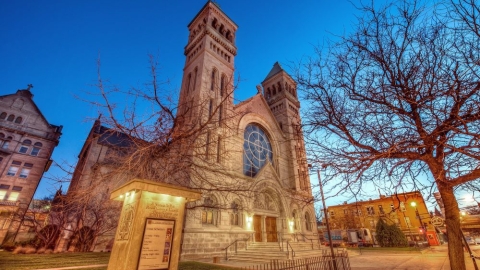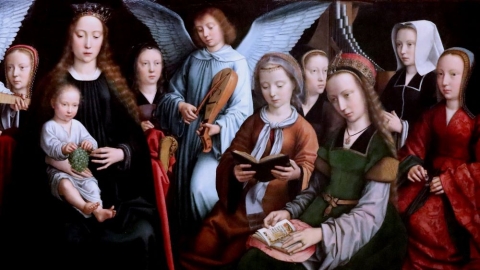The Crisis in the Church – Roots and Remedies

Bishop Bernard Fellay.
Message of Bishop Bernard Fellay, Superior General of the Society of St. Pius X, on the occasion of the conference on “The Roots of the Crisis in the Church,” Rome June 23, 2018.
This conference should prove most useful, for today it is imperative to trace the roots of the crisis in the Church. On the occasion of the publication last September of the Correctio filialis which I myself signed, I expressed the desire that “the debate concerning important questions be broadened, in order to reaffirm truths and condemn errors” (FSSPX.News 09/26/2017). Thus I whole-heartedly support the goal you have here set: “Rejecting these errors and returning, please God, to Catholic truth full and lived is the necessary precondition of the Church’s renaissance.” (Presentation at the seminar of June 23, 2018)
The Correspondence Between Cardinal Ottaviani and Archbishop Lefebvre
Your meeting is along the same lines as a relatively unknown exchange of letters between Cardinal Ottaviani and Archbishop Lefebvre, which may help put things in perspective. This exchange took place in 1966, one year after the end of the Council.
On July 24, 1966 Cardinal Ottaviani, then Pro-Prefect of the Congregation for the Doctrine of the Faith, sent out to the bishops a letter addressing ten errors that had arisen after the end of Vatican II. Among the errors were the following, which are still relevant today, more than fifty years after the Council:
“Objective and absolute truth, firm and unchangeable, is today hardly recognized by many, who subject everything to a sort of relativism, arguing speciously that all truth must be determined by the evolution of consciousness and history.” (n. 4)
“Errors no less grave have spread in the field of moral theology. For certain theologians, and not an inconsiderable number of them, dare reject the existence of objective morality. Others reject the natural law while accepting the legitimacy of situation ethics, as they call it. They propagate deleterious opinions regarding morality and questions concerning sexuality and matrimony.” (n. 9)
Letter from cardinal Ottaviani
The roots of the Church’s crisis can be found in questioning “objective and absolute truth” and “objective morality;” the promotion of “relativism;” and the acceptance of “situation ethics.”
When Superior General of the Holy Ghost Fathers, Archbishop Marcel Lefebvre sent to Cardinal Ottaviani a list of questions on December 20, 1966. These dubia had not arisen from any purely personal questioning, but rather from doubts he recognized as attributable to the Church’s official teaching after the Council. “Whether it be a question of:
- The transmission of episcopal jurisdiction,
- The two sources of Revelation,
- Scriptural inspiration,
- The necessity of grace for justification,
- The necessity of catholic baptism,
- The workings of grace in heretics, schismatics, and pagans,
- The ends of marriage,
- Religious liberty,
- The ‘end things,’ etc.
On these fundamental points traditional doctrine had been both clear and taught uniformly in catholic universities. But many of the Council’s documents provoked doubts concerning these very truths.”
In his article entitled “The Maturing of the Council” (in Communio n. 92, Nov. – Dec. 1990, p. 85 ff.), Fr. Peter Henrici s.j. confirmed the legitimacy of Archbishop Lefebvre’s worries. The Swiss theologian was frank in his affirmation that at the Council there had been an “opposition of two different traditions of theological doctrine which are fundamentally incompatible!”
The Practical Consequences of Doubts and Errors
Yet Archbishop Lefebvre did not stop at proclaiming and denouncing doubts that had recently arisen. He wrote to Cardinal Ottaviani, “The consequences of this have rapidly been drawn and applied in the life of the Church.” He went on to enumerate the practical and pastoral consequences of these doubts:
- Doubts about the necessity of the Church and the sacraments lead to the disappearance of priestly vocations;
- Doubts on the necessity for and nature of the “conversion” of every soul involve the disappearance of religious vocations, the destruction of traditional spirituality in the novitiates, and the uselessness of the missions;
- Doubts on the lawfulness of authority and the need for obedience, caused by the exaltation of human dignity, the autonomy of conscience and liberty, are unsettling all societies beginning with the Church—religious societies, dioceses, secular society, the family;
- Doubts regarding the necessity of grace in order to be saved result in baptism to be held in low esteem, so that for the future it is to be put off until later, and occasion the neglect of the sacrament of penance;
- Doubts on the necessity of the Catholic Church as the only true religion, the sole source of salvation, emanating from the declarations on ecumenism and religious liberty, are destroying the authority of the Church’s Magisterium. In fact, Rome is no longer the unique and necessary “Magistra Veritatis.”
Some Concrete Solutions
Facing such evils, Archbishop Lefebvre respectfully suggested some concrete solutions to the Sovereign Pontiff. “May the Sovereign Pontiff deign use solemn documents to proclaim the truth and condemn error without fear of being contradicted, without fear of schisms, without fear of questioning the Council’s pastoral pronouncements.”
He asked the Pope to give efficacious support to faithful bishops. “May the Sovereign Pontiff deign:
- Encourage every bishop to shore up faith and morals in his own diocese, as befits every good shepherd;
- Support courageous bishops and prompt them to reform their seminaries, restoring within them Thomism;
- Encourage superiors general to maintain the fundamental principles of Christian asceticism, especially obedience, in their novitiates and communities;
- Encourage the spread of Catholic schools;
- Encourage orthodox publishing;
- Encourage associations that promote Christian family life;
- And finally, castigate and silence those who spread doctrinal errors.”
By founding the Society of St. Pius X in 1970, Archbishop Lefebvre attempted to introduce, as best he could, these very solutions: Thomistic instruction in the seminary, Christian asceticism and obedience in the formation of seminarians; and as an integral part of the Society’s priories – Catholic schools, Catholic publishing, associations promoting Christian family life.
For the founder of the Society of St. Pius X, this practical response was fundamental: doing what is possible given one’s position, with the grace of state, without ever forgetting, however, as Cardinal Ottaviani wrote, that “only the successor of St. Peter can save the Church.”
From Exclusivity to Inclusivity… and Back Again
One must here add that for Archbishop Lefebvre this practical response was an effective antidote to relativism. He wished to act doctrinally, but also pastorally, because he understood well the ideological character of the post-conciliar novelties. The ideologue sees in a purely speculative argument only an ideology contrary to his own, and not the opposite of an ideology. It is in that manner that subjectivist relativism reasons and dissolves “objective and absolute truth” and “the objective rule of morality.”
Surely the “doubts” referred to earlier cannot but call into question what is most basic – the Church’s role in salvation – by promoting secondary Christianity, as Romano Amerio so perspicaciously described it. Losing sight of that which is most fundamental has the effect of blurring a doctrinal and moral teaching that used to be clear. If the Church’s mission of bringing salvation to men is no longer its central purpose and guiding force, hierarchy and order give way to contradictions and incoherence, and then it is no longer a question of mere “doubts!”
Henceforth what Our Lord considered incompatible or exclusive – “either or” (“No man can serve two masters. For either he will hate the one and love the other; or he will sustain the one and despise the other.” Matt. 6, 24) – becomes reconcilable or inclusive, as people say today. Either or is replaced by a both and “that combines heaven and earth as a compound, in which the world is the predominant element that gives the character to the whole.” (Romano Amerio, Iota Unum, A Study of Changes in the Catholic Church in the XXth Century, Sarto House, 1996, p. 505) And all this is justified by a “pastoral mercy” that concerns itself with immigration, the rights of man, ecological questions, etc.
That is why Archbishop Lefebvre was so insistent that the Society of St. Pius X be left totally free to “give Tradition a try.” In the face of relativism and its debilitating consequences for the Church (a decline in vocations and an ever-diminishing practice of religion), he knew it was necessary to put into practice the fruits of a two-thousand-year-old Tradition. He hoped that the Church’s return to Tradition would one day allow it to reclaim its heritage. Going back to the roots of the crisis implies a return to Tradition: from effects to causes, or from the fruit to the tree, as Our Lord said. And at that point all ideologies crumble, for facts and figures are not “traditionalist” (and certainly not “lefebvrist”), they are either good or bad, just like the tree from which they come.
The goal of Archbishop Lefebvre and his Society is simply that the Church regain its Tradition by this simple but compelling experiment. We cannot but embrace whole-heartedly the conclusion of the letter addressed to Cardinal Ottaviani: “Doubtless I am reckless in expressing myself in this manner! But it is with ardent love that I compose these lines, love of God’s glory, love of Jesus, love of Mary, of the Church, of the Successor of Peter, Bishop of Rome, Vicar of Jesus Christ.”
(FSSPX.Actualités - 06/23/2018)





